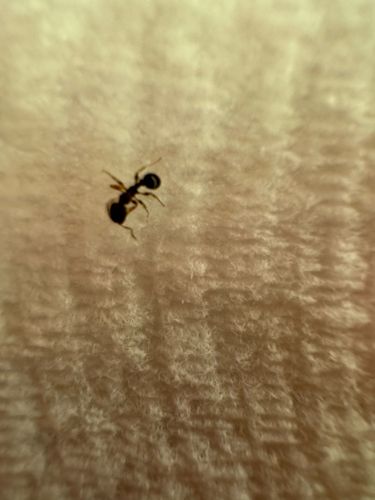Ant (most likely Pavement Ant or a similar small black ant)
Scientific Name: Formicidae (family, specific genus/species difficult to determine from image)
Order & Family: Order: Hymenoptera, Family: Formicidae
Size: Typically 2-10 mm, depending on the specific species and caste (worker, queen, male). The ant in the image appears to be on the smaller side, possibly 2-4 mm.

Natural Habitat
Ants are highly adaptable and can be found in a variety of habitats, including urban environments, forests, grasslands, and deserts. Many species nest underground, in wood, or under stones.
Diet & Feeding
Ants are omnivores. Their diet includes sugars (from nectar, honeydew from aphids, sweet foods), proteins (from other dead insects, small live prey), fats, and occasionally fungi or seeds.
Behavior Patterns
Ants are social insects living in colonies with a queen, workers, and sometimes males. They exhibit complex behaviors including foraging for food, building nests, caring for offspring, and defending the colony. They often follow scent trails to and from food sources.
Risks & Benefits
Risks: Can be considered pests when they invade homes searching for food. Some species can sting or bite (though many small ant bites are harmless). They can contaminate food. Benefits: Play important ecological roles as decomposers, aerating soil, and preying on other insects. Some species aid in seed dispersal.
Identified on: 9/24/2025